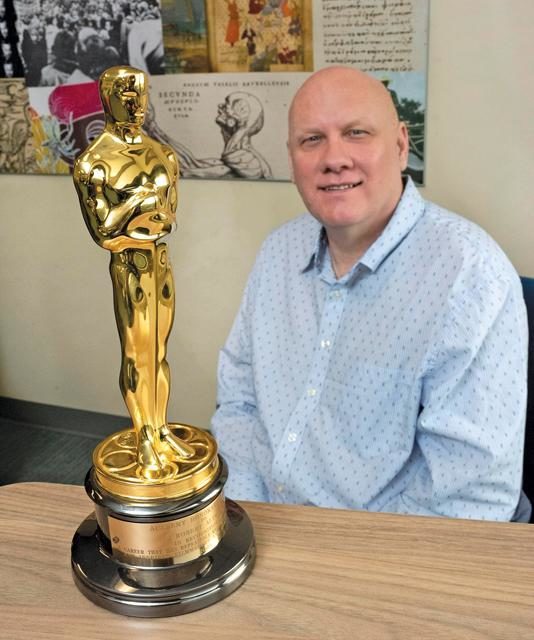“This is a film about a film.
“This is a film about a filmmaker.”
That’s how Orson Welles described his last movie project in his own typed description of the story. Along with drafts of the evolving script and notes on footage he shot, the paper is among a trove of original Welles documents in about 150 large boxes held in the “Screen Arts Mavericks & Makers” collection at the U-M’s Special Collections Research Center.
The U-M also has Robert Altman’s lifetime achievement Oscar, along with about 700 boxes of his archives. Just one box, from the making of Altman’s 1975 sprawling political satire Nashville, contains photos of cast members in the outfits they wore on the set each day, papers from a lawsuit singer Ronee Blakley filed against Altman over rights to the songs she performs in the film, and a draft script for a proposed sequel.
Begun in 1998 with an endowment by Detroit-born film producer Robert Shaye, the collection has expanded in size and reputation under film studies field librarian Phil Hallman, acquiring extensive material from director Alan Rudolph (Altman’s chief disciple), director John Sayles (Return of the Secaucus Seven), and others.
The Welles connection was first forged by U-M prof Catherine Benamou, now at the University of California–Irvine and author of a Welles bio, It’s All True. Benamou got to know Welles’ assistant Richard Wilson and persuaded Wilson’s son Chris to donate papers his father had kept. Hallman collected other materials from auction houses. The director’s companion and collaborator, actress Oja Kodar, eventually sold her material to the U-M as well.
In 2016, an international team of filmmakers set out to revive Welles’ unfinished final film—and turned to the U-M for help. The Other Side of the Wind is a mockumentary left uncompleted when Welles died in 1985. Ironically, its subject is a legendary director’s last film, unfinished due to his untimely demise. Kodar, who shared writing credits and starred in the film, initially clashed with the team led by French producer Filip Jan Rymsza but later collaborated with them.
The group eventually released a new version of the film and a documentary about making it called They’ll Love Me When I’m Dead. Both make use of materials the U-M provided.
The Michigan Theater screened The Other Side of the Wind in November, and it’s now available on Netflix. The movie website Rotten Tomatoes calls it “a satisfying must-watch for diehard cineastes,” but other audiences may find it tedious. Hallman believes Rymsza’s team was too reverential about the footage Welles shot and too reluctant to make major edits—another layer of irony, since the movie is about how Hollywood sycophants defer to a godlike director.
Each year, U-M film students mount exhibits on a director featured in the archives. Altman was the first subject, in 2013, followed by Sayles. In 2015, the centennial of Welles’ birth, he was the featured subject. After a year off, students tackled indie producer Ira Deutchman in 2017 and Rudolph in 2018. This May, the focus will be on lesser-known director Nancy Savoca.
The latest filmmaker to donate his papers to the U-M is Jonathan Demme—his material is still being sorted and catalogued. “People are contacting us now,” notes Hallman. “But our intention is never to get so big that we lose the ability to single them out and recognize them.”
The Welles archive includes more unfinished scripts. If someone tries to revive those other lost works, they’ll no doubt be contacting Hallman.
